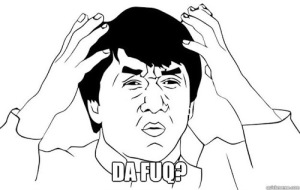According to the Urban Dictionary, Yo means, 1) A contraction of the possessive prenominal adjective “your” or, 2) An informal address or title to one whose name is not known to another; can be used as an interrogative address. In Korea, adding words like -yo, and -nida at the end of each sentence shows the different levels of politeness.
Pretty interesting, huh?
In today’s post, I will be giving out the top secrets of when to say your YO’s. Trust me, it’s not that hard. After all, you are all 10% Korean so far, right?
So you may ask, “Do I add yo to everything I say?” And the answer is, NO YOU DON’T.
When you meet someone for the first time, depending on who the person is, you decide on whether or not you will be formal or informal.
There are three main levels of politeness in Korean:
- Most formal
- Formal
- Informal
Let’s talk about each one:
- -ㅂ니다/-ㅂ니까 [-nida/-nikka] ending = honorific, most formal.
- -(아/어/여) + 요 [-(a/eo/yeo) + yo] ending = natural, formal.
- -아/어/여 [-a/eo/yeo] ending = casual, informal.
Now, let’s get more detailed.
- Most formal way to say “Hi” would be, “Ahan-nyung-ha-sip-nikka”. You can say that to your boss, friend’s parents, or someone older than you.
- Formal way to say “Hi” would be, “Ahan-nyung-ha-se-yo”. Again, you can say that someone older than you.
- Informal way to say “Hi” would be, “Ahan-nyung”. You can say that to your friends of same age or someone younger than you.
And the ending here, -ha-sip-nika, and -ha-se-yo are part of a verb. Depending on what you’re saying and who you’re saying it to, the verb ending can change.
Confused yet?
Let’s take a look at one more example:
- Most formal way to say “What is this?” would be, “i-geo mwop-nikka?”
- Formal way to say “What is this?” would be, “i-geo mwo-ye-yo?”
- Informal way to say “What is this?” would be, “i-geo mwo-ya?”
In this example, “i-geo” means “this” and “mwop/mwo” means “what”. And like I mentioned before, depending on what you’re trying to say, the ending can drastically change.
In most cases, speaking formal way to elders, strangers, and someone you know who are older than you can get you around. Don’t worry about the most formal way because not many people use them anyways. The main thing you have to understand is distinguishing the formal and informal way of speaking.
And after you can distinguish these different levels, congratulations you are officially 25% Korean.
Here is a video of what I think can help you understand better of formal and informal speech.
LEARN TO SAY YOUR YOS THE RIGHT WAY!

